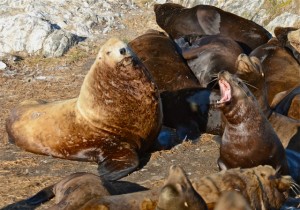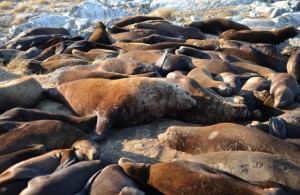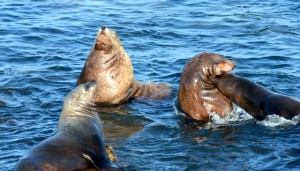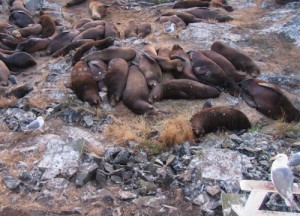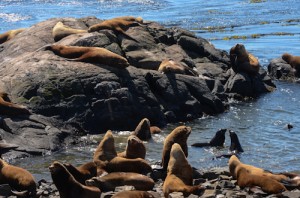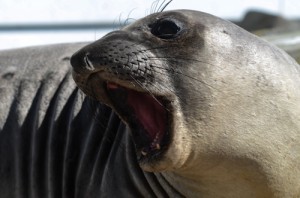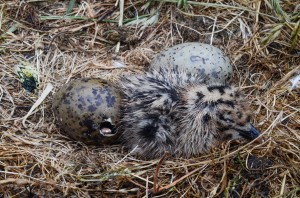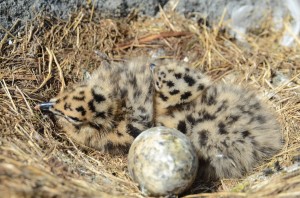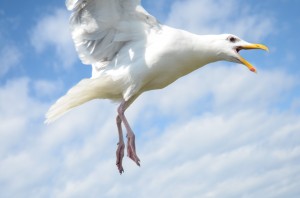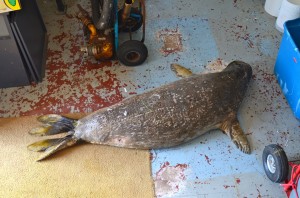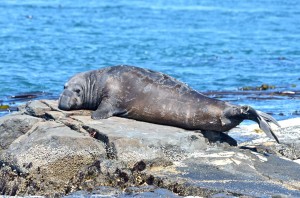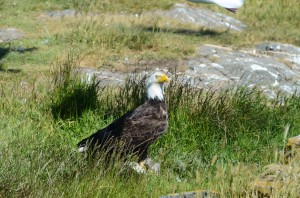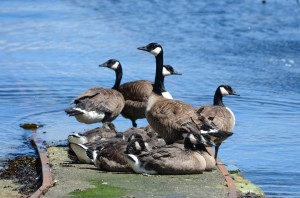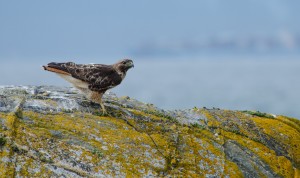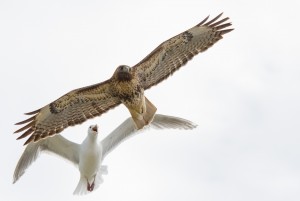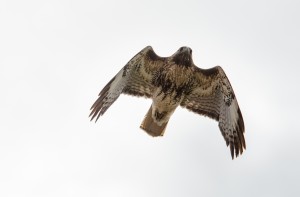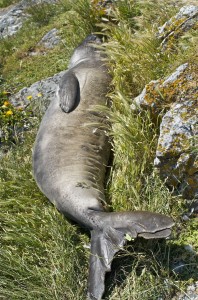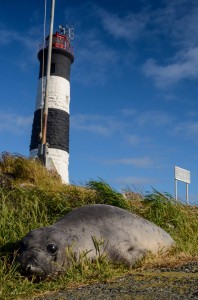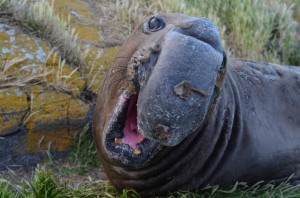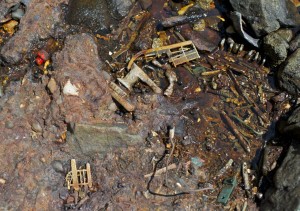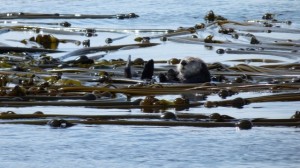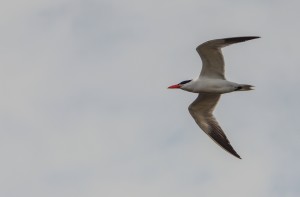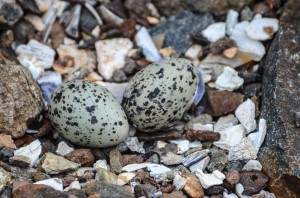Since the gale on Saturday night, about 75 Steller and 150 Californian sea lions have been hanging out under my window in the shelter of the house. It is hard to describe just how loud and smelly it is. I wish you could witness it for yourself! Well you can at: http://www.racerocks.com/racerock/video1frame.htm
Here are a few pictures. The Steller bulls (Eumetopias jubatus) are particularly impressive. Some of them weigh in at 1000 kgs.
Sea Lions are extremely social and appear boisterous and argumentative. Smaller individuals will always move for the bigger ones, though they roar, growl and hiss in protest. Clashes are very frequent but damage is rare. Most of the contact actually involves just the whiskers (vibrissae), though nips to the skin do happen. Usually a smaller one will snap back in defence then lurch away across the backs of the sleeping neighbours who lazily complain til the commotion stops and they drift back to sleep. 30 seconds later it happens again… all day long and most of the night too!

